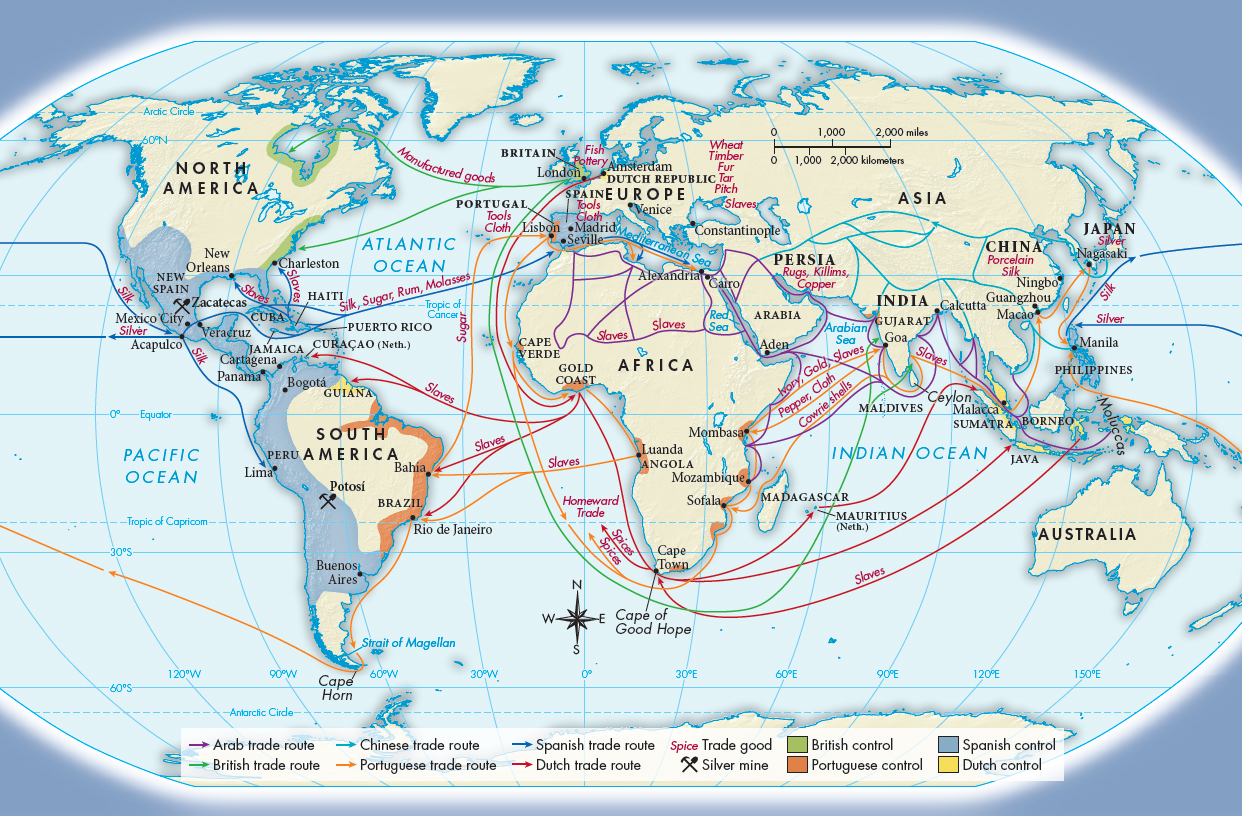Understanding World Societies:
Printed Page 476
The Birth of the Global Economy
With Europeans’ discovery of the Americas and their exploration of the Pacific, the entire world was linked for the first time in history by seaborne trade. The opening of that trade brought into being three successive commercial empires: the Portuguese, the Spanish, and the Dutch.
In the sixteenth century the Portuguese controlled the sea route to India (Map 16.3). From their bases at Goa on the Arabian Sea and at Malacca on the Malay Peninsula, ships carried goods to the Portuguese settlement at Macao. From Macao Portuguese ships loaded with Chinese silks and porcelains sailed to Japan and the Philippines, where Chinese goods were exchanged for Spanish silver from New Spain. Throughout Asia the Portuguese traded in slaves. They also exported horses from Mesopotamia and copper from Arabia to India; from India they exported hawks and peacocks for the Chinese and Japanese markets. Back to Portugal they brought Asian spices that had been purchased with textiles produced in India and with gold and ivory from East Africa. They also shipped back sugar from their colony in Brazil, produced by African slaves whom they had transported across the Atlantic.

Becoming an imperial power a few decades later than the Portuguese, the Spanish were determined to claim their place in world trade. This was greatly facilitated by the discovery of immense riches in silver in the Americas. Silver poured into Europe through the Spanish port of Seville, contributing to steep inflation across Europe. Demand for silver also created a need for slaves to work in the mines.
The Spanish Empire in the New World was basically land based, but across the Pacific the Spaniards built a seaborne empire centered at Manila in the Philippines. The city of Manila served as the transpacific bridge between Spanish America and China. In Manila Spanish traders used silver from American mines to purchase Chinese silk for European markets.
In the seventeenth century the Dutch challenged the Spanish and Portuguese Empires. The Dutch East India Company was founded in 1602 with the stated intention of capturing the spice trade from the Portuguese. Drawing on their commercial wealth and long experience in European trade, by the end of the century the Dutch emerged as the most powerful worldwide seaborne trading power (see Chapter 19).
>QUICK REVIEW
How did European demand for sugar stimulate the expansion of the transatlantic slave trade?